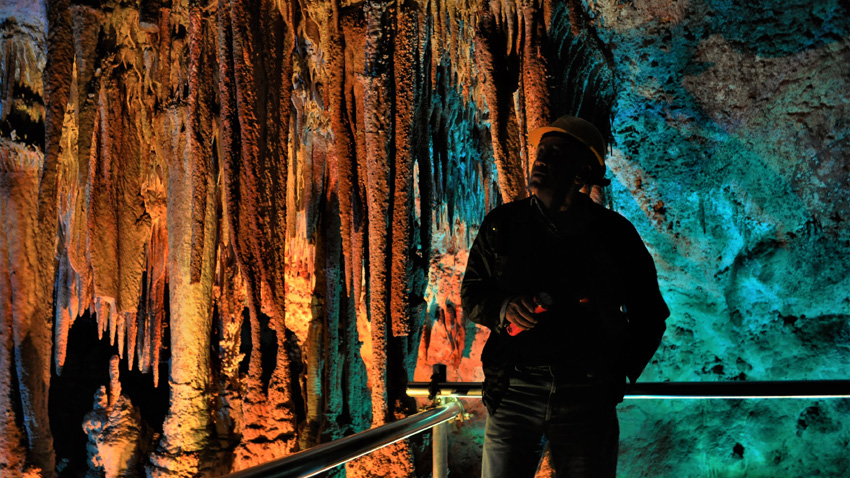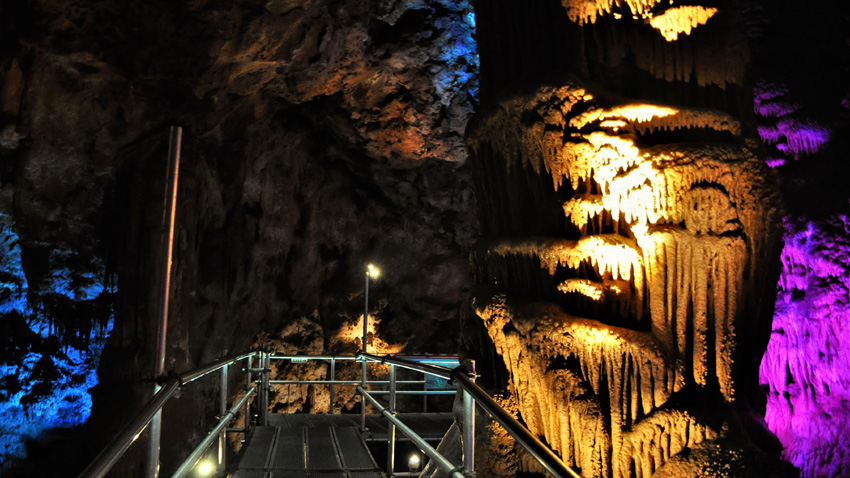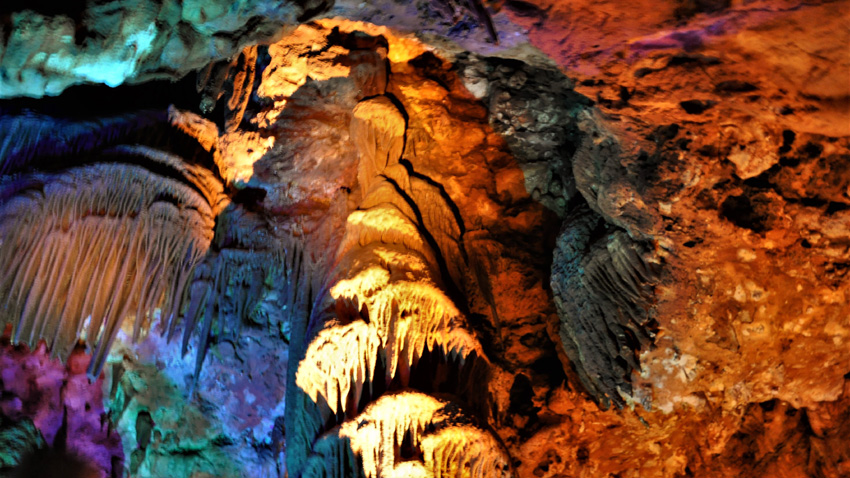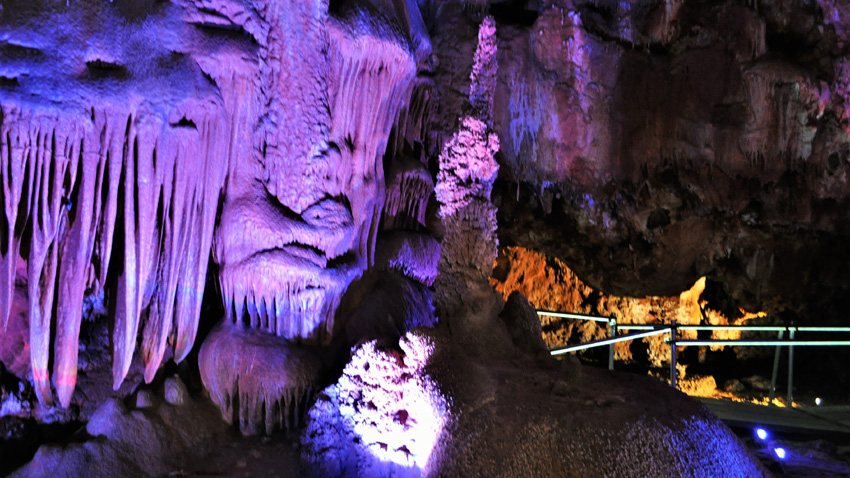One needs very comfortable shoes, no fear of dark and claustrophobically narrow spaces, in order to enter this one, but mostly you will need the full potential of your imagination. Welcome to the magic of the fantastic Venetsa ( The Wreath) cave, situated deep in the heart of the Balkan Range.

It can be found near the village of Oreshets in the North-West segment of the mountain, not far away from the Belogradchik Rocks. It was discovered back in 1973 on the spot of a stone quarry, but was unveiled for visitors barely in 2015, after its full research, mapping and equipping with special rails, stairs etc. The colorful LED lighting brings life and magic into the glory of the cave, revealing it all to the tourist, astonished by its beauty. 5 huge halls have been revealed so far and the overall length of the corridors is some 300 m. ‘Corals, crystals, stalactones, stalagmites, stalactites – it has it all! To say nothing of the semi-precious onyx stone that forms a large number of the formations inside. Each hall is different!’ guide Bori Borisov says with enthusiasm upon welcoming the next group at the entrance.

However, the curious tourist mustpin through a very narrow opening, in order to enter this underground kingdom and the stairs and railings are slippery due to the nearly 90% humidity. However, the view inside is worth the efforts.

One knows that somehow he or she is below the surface of the earth, but the feeling is like watching a National Geographic production on the creation of the Universe, or a Hollywood movie for aliens. One formation resembles a huge poisonous jelly-fish, floating in the air with a fine Buddhist temple as its background. The dark blue feature of a Mother Mary praying can be spotted nearby. Its silhouette slowly sinks into the darkness before emerging again, this time lit up in gold light. Anyone sees whatever his or her imagination pictures in the semidarkness of the cave. At the same time the formations have their official names, such as ‘the pelican’s head’, ‘the night lamp’, ‘the tulip’ ‘God’s hand’ etc.

‘We have formations that cannot be seen elsewhere. For instance, stalactites, pointing sideward. Most of those are conical across other caves. This natural phenomenon is extremely rare,’ Bori Borisov says.
Venetsa has one other major attraction – it is claimed to have accommodated the largest cave formation in Bulgaria. ‘The biggest stalactite can be found in the Magura cave with girth of 6 m. And we have a 25-meter-high stalagnate of onyx,’ our guide says with pride.

Bori recalls that back in the 1970s the cave was empty, but now it has its own fauna. ‘Nine bats moved in when we opened the previously capsuled cave and today those are 25,’ he says. The miniature representatives of the so-called troglobite Collembola crawl somewhere underneath across the halls.

The unique lightning of the Venetsa, worth EUR 40,000 has been made by an Israeli designer. ‘However, the system has already burst twice due to thunderstorms. That is why the cave doesn’t work in bad weather,’ the guide explains.
The tour of the Venetsa lasts for about an hour with working hours 9 am – 5 pm. Monday is a day off.
This article is supported by the For the Balkan and the People project and WWF-Bulgaria.
Photos: Veneta Nikolova
A 4-5% growth in the number of foreign tourists is expected during the winter season. This forecast was made by Ivan Groshev, chairman of the Association of Incoming Agencies, in an interview with the Bulgarian National Radio...
The Prohodna Cave, famous for its impressive beauty and the phenomenon of the "Eyes of God", is one of the favorite places for cinematographers . In addition to Bulgarian films, Soviet and now American productions were filmed here, BGNES reported...
The problems related to electricity cuts in some places in the country did not affect the way tourists welcomed 2025 in the places of accommodation, Rumen Draganov from the Institute for Analyses and Assessments in Tourism has told..

+359 2 9336 661
